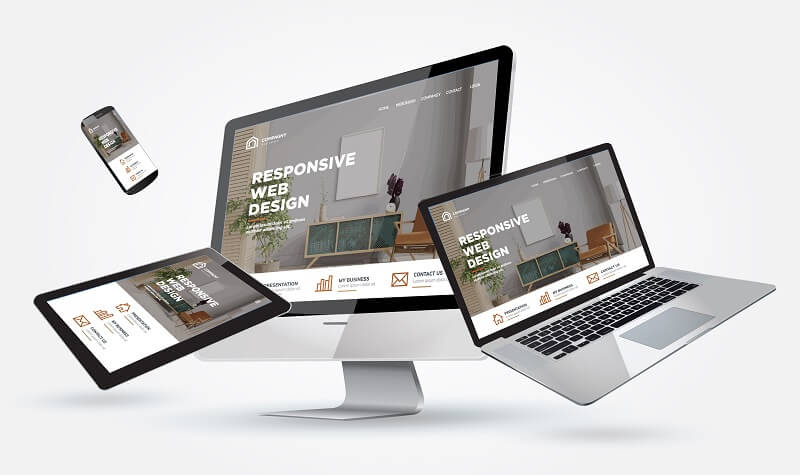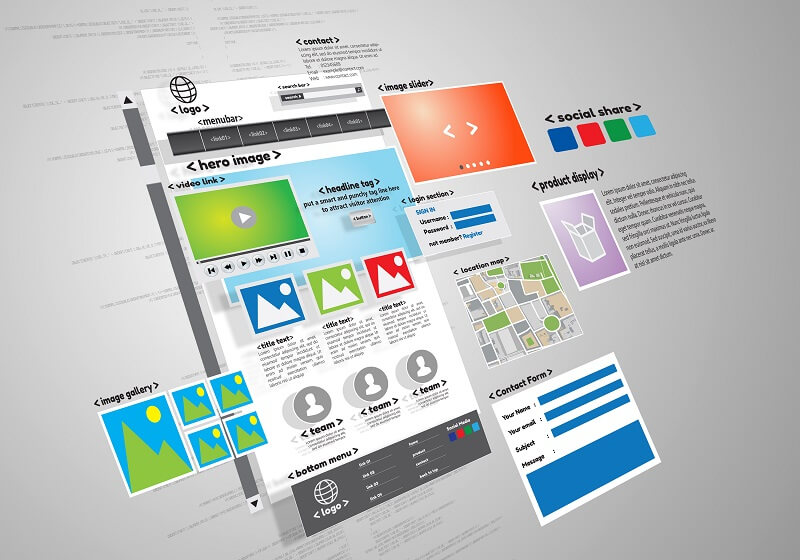What Manufacturing Websites Need To Do To Attract Leads and Streamline Operations in 2025
Given that rapid technological innovation is overwhelming our ability to keep up with the latest marketing trends, the way manufacturers attract leads and operate is changing rapidly. Traditional manufacturing websites that are built without the user in mind no longer meet the standards of B2B buyers who equate a brand’s online presence with professionalism and trust.
In 2025, the right content strategy and technology will help manufacturing websites stand out and attract the right leads by clarifying what they stand for and showing why they’re a better choice than the competitors.
By applying this expert advice to your manufacturing website development, you will be equipped with everything you need to grow your business exponentially in 2025 and beyond.
Mobile-Optimized, Lightning-Fast Website Experience

In 2025, over 60% of B2B buyers use mobile devices to research or purchase products or services, meaning mobile responsiveness is no longer an option but an essential investment for manufacturing websites. For optimal mobile experiences, a fast site speed is crucial. Likewise, investing in smooth navigation and intuitive design will further optimize for performance and user satisfaction.
Creating a seamless user experience with your manufacturing website design strategy is not only a core strategy to attract customers but also a way to get Google’s favor through better rankings. Essentially, Google prioritizes core vitals and user experience as key ranking factors, helping you be found more easily by businesses looking for precisely what you have to offer.
To win search engine favor, manufacturers are turning to progressive web apps (PWAs) that combine the best of a website and an app experience, delivering fast and reliable performance across all devices, even in low-bandwidth environments.
PWAs make accessing important information easier for engineers, procurement teams, and field representatives who need information on the go. They are ideal for accessing technical documents, viewing order tracking and inventory, browsing through product catalogs, and logging into partner portals.
AI-Powered Live Chat and Virtual Sales Assistants
Due to the nature of the B2B manufacturing business, buyers expect quick answers when it comes to fast inventory turnaround. Waiting for a response or an acknowledgment of an inquiry can prompt them to look elsewhere. Indeed, in today’s era, the speed of customer service, deal closure, and inventory delivery speaks volumes about a brand’s professionalism.
To align with the changing times when consumers want things quickly without compromising quality, AI-powered live chat and virtual sales assistants are becoming popular options for modern manufacturing websites.
These helpers can be trained on product FAQs, answer questions on various topics, and direct users to essential documents. By addressing general inquiries, they can save sales teams time and resources.
Unlike the customer service automation of the past, which lacked conversational support that builds trust, the natural language processing and AI integrations of today have a much more human touch. They can deliver engaging interactions with helpful answers in real time.
Conversion-Focused CTAs and Lead Capture Funnels
Understanding your primary buyer’s pain points and needs will enable you to design a customer journey that considers every stage of the buyer’s interaction with your brand, from initial familiarity to decision-making.
When you invest in understanding your customers’ behavior, you can optimize your approach for better conversions. Manufacturing websites that capture leads at every stage of the funnel through valuable content, demos, discounts, and persuasive messaging are more equipped to meet their sales goals than those that don’t focus on the customer-nurturing process.

To successfully nurture your leads, the following strategies and techniques will not only build buyer trust but, when implemented correctly, can evolve into a loyal, long-term partnership.
- Modern CTA Strategies: These CTAs employ interactive forms, “request a quote” flows, and explanatory videos that lower buyer resistance and urge them to connect with you.
- Progressive Profiling: Given the paperwork fatigue that is ubiquitous in the manufacturing industry, utilizing strategies that collect just the correct info from users over time will make it easier for them to engage with you. To clarify, simplify, and avoid form fatigue.
- High-Value Lead Magnets (Freebies): Offer value-packed downloadable spec sheets, buyer’s guides, or case studies to build rapport with your leads, show them why you are the best supplier for their needs, and encourage form submissions.
- Personalized CTAs with AI: Don’t shy away from using AI to improve your content and messaging. Use AI tools to tailor calls-to-action based on user job title and behavior. Personalizing your calls-to-action based on data and relevance can significantly improve conversion rates.
Social Proof Through Case Studies and Video Content
Trust Signals
Providing trust signals on your manufacturing website is one of the most important predictors of your ability to convert leads to buyers. Today’s B2B buyers look for proof that manufacturing is professional, quality, and trustworthy. And what better way to showcase this than through industry certifications, awards, partnerships, and reviews?
Most buyers are risk-averse, and the job of every optimized manufacturing website is to lower that buyer apprehension. By including trust signals throughout your homepage, “About” page, and product pages, you can minimize buyer hesitation at every stage of the buyer research process.
User-Generated Content (UGC)
Social proof is one of the most potent assets for manufacturing businesses. It showcases other buyers’ experiences with a brand’s products and is the key trust signal that turns potential buyers into excited customers.
What makes user-generated content so different from traditional reviews and product marketing content is that it feels more authentic and relatable. In fact, 90% of shoppers report that user-generated content (UGC) influences their buying decisions more than promotional emails or search engine results.
So, how can you effectively leverage user-generated content (UGC) to market your manufacturing website? One way is to share LinkedIn posts from happy clients or short videos of customer-submitted success stories. You can also repurpose this content into short videos that you sprinkle strategically throughout your website and social channels.
Case Studies & Reviews
Just like UGC content, case studies, and traditional written reviews can provide proof of performance and showcase how your products can meet customer needs tangibly. However, unlike reviews, case studies provide more context and walk buyers through the lasting impact of buyer satisfaction in the format of powerful storytelling.
While UGC and written testimonials offer immediate buyer insight, case studies are created to showcase the background of B2B business needs and how a manufacturer met them in the long term.
CRM Integration for Seamless Operations
A fully optimized manufacturing website should also simplify the marketing and sales process for your team. It isn’t enough to make your website a lead magnet. It should also integrate with your back-end systems, allowing automated processes to sync inquiries, customer service interactions, and sales activity.
Connecting your website to platforms like Salesforce or HubSpot helps your team get instant access to the performance data they need. Overall, real-time tracking enables more efficient lead nurturing and the collection of essential user behavior data, allowing for quick strategy pivots that lead to higher conversion rates.
Manufacturing Website Development & Design

It is no surprise that technology is changing rapidly and that every year shifts the way businesses interact with and market to consumers. The advent of AI has introduced new expectations for how consumers interact with brands and shop online, making it more urgent for manufacturers to understand these trends and capitalize on them to stay competitive.
If your manufacturing website needs a revamp in development and design, our experienced manufacturing website designers can help you translate all of these key website features into practice. We’ve done this for some of the biggest manufacturing brands successfully, and we are confident that we can do the same for you.
Reach out to us for a quote!

